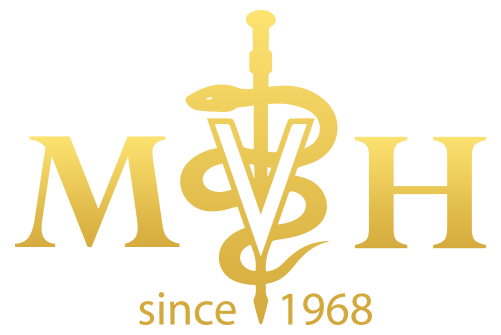
You take your responsibilities as a pet owner seriously by feeding your pet nutritious food, bringing her to Minnesota Veterinary Hospital for routine check-ups, and ensuring that she's well-groomed and gets enough exercise. Even so, you could be overlooking an important part of her overall healthcare.
Your dog or cat needs a regular oral healthcare routine at home and at least an annual check-up and cleaning at our clinic. Without these things, she could develop periodontal disease that leads to tooth loss and infection as well as increases the likelihood of developing serious health problems like heart disease and diabetes.
Periodontal Disease is Common Yet Preventable
Up to 80 percent of dogs and cats have periodontal disease ranging from mild to severe. Periodontal disease, also known as gum disease, occurs when bacteria, tartar, and plaque buildup on your pet's teeth and attack his gum tissues. Choosing a food high in meat and protein but absent in artificial fillers can improve the condition of your dog or cat's teeth in some situations. For pets with severe decay, we can recommend a dental-specific diet.
Periodontal Disease is Common Yet Preventable
Up to 80 percent of dogs and cats have periodontal disease ranging from mild to severe. Periodontal disease, also known as gum disease, occurs when bacteria, tartar, and plaque buildup on your pet's teeth and attack his gum tissues. Choosing a food high in meat and protein but absent in artificial fillers can improve the condition of your dog or cat's teeth in some situations. For pets with severe decay, we can recommend a dental-specific diet.
While we provide your pet with a professional dental cleaning, it's what you do at home that makes the most difference. We encourage you to brush your pet's teeth daily or at least several times per week. If you have never done this before, start slow by allowing her to sniff and lick the toothbrush and toothpaste. Take things one step at a time by placing the toothbrush in your pet's mouth and allow her to get accustomed to it. Brush for a few seconds the next day and gradually increase the time until you reach two minutes.
You may need to start out wearing rubber gloves or using a small finger brush if your pet is fearful or resistant. If you're consistent with the routine and offer your pet praise for the smallest amount of cooperation, toothbrushing should get easier with time. If it doesn't, just ask any member of our staff for more tips.
Symptoms of Periodontal Disease in Dogs and Cats
Please schedule an oral evaluation with Minnesota Veterinary Hospital right away if you notice any of these symptoms:
- Reluctance to eat and/or difficulty chewing food
- Excessive drooling
- Persistent bad breath
- Staining on the teeth
Your pet's veterinarian will let you know the diagnosis and treatment plan after the evaluation.
We use anesthesia during oral exams and cleaning sessions to ensure your pet's comfort and cooperation. Scaling your pet's teeth above and below his gum line removes the plaque and tartar that threatens the stability of his teeth. We then flush the dislodged plaque and tartar and finish the appointment by polishing the outside of your pet's teeth. Lastly, we coat the teeth with fluoride to strengthen the enamel and discourage plaque and tartar build-up in the future.
Photo Credit: Katerina_Brusnika / Getty Images
